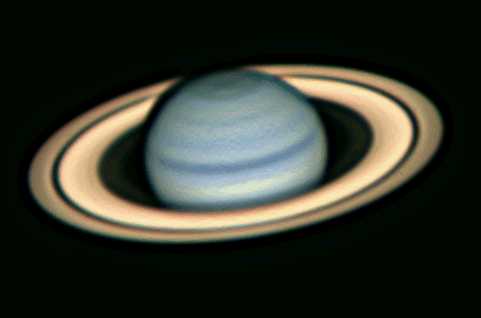
|
Credit & Copyright: Nordic Optical Telescope
Explanation:
Saturn is the second largest planet in our
Solar System. Saturn has been
easily visible
in the sky since history has been recorded.
Galileo used one of the
first telescopes in 1610 to discover Saturn's rings,
which he first thought were moons.
Maxwell showed in 1856 that
Saturn's rings couldn't be a single solid,
since Saturn's own gravity would break it up.
Were
Saturn's rings assembled into a single body,
it would measure less than 100 kilometers across.
The origin of
Saturn's rings,
and of unusual radial patterns that appear on them called
spokes, are still unknown. The
above representative-color picture
was taken from Earth in infrared light. A robot spacecraft
Cassini
launched in 1997 will reach
Saturn in 2004.
|
January February March April May June July August September October November December |
| ||||||||||||||||||||||||||||||||||||||||||||||||
NASA Web Site Statements, Warnings, and Disclaimers
NASA Official: Jay Norris. Specific rights apply.
A service of: LHEA at NASA / GSFC
& Michigan Tech. U.
Based on Astronomy Picture
Of the Day
Publications with keywords: Saturn - ring
Publications with words: Saturn - ring
See also:
- APOD: 2025 November 16 Á Crossing Saturns Ring Plane
- APOD: 2025 September 25 Á Saturn Opposite the Sun
- APOD: 2025 September 22 Á Equinox at Saturn
- APOD: 2025 February 23 Á Saturn in Infrared from Cassini
- APOD: 2024 December 8 Á Aurora around Saturns North Pole
- Saturn at Night
- APOD: 2024 August 27 Á Moon Eclipses Saturn
